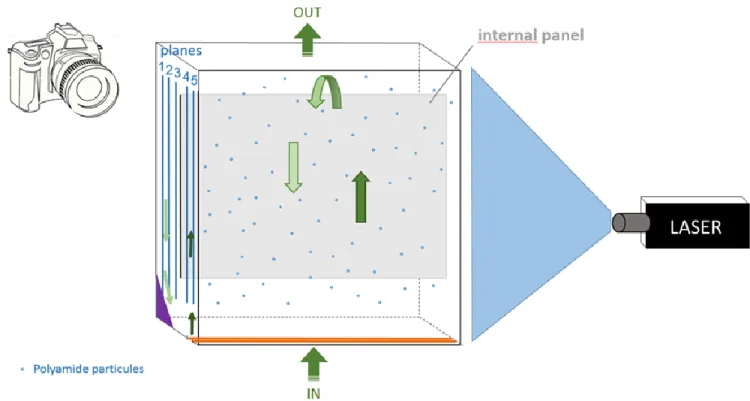GEPROC Scientific Day 2018
Materials and processes for energy
University of Liège
October 29
th, 2018
Photobioreactor characterization for the culture of encapsulated microalgae
K.Weck
1,*, S.Calvo
1, D.Toye
11 Laboratory of Chemical Engineering, University of Liège, Allée de la Chimie 3/B6C, 4000 Liège, Belgium
*Corresponding author: klara.weck@uliege.be
Keywords: microalgae, encapsulation, photobioreactor, fluidized bed reactor, scale-up
ValoAlgue project aims at cultivating fixed biomass (encapsulated microalgae) (figure 1). Microalgae are a feedstock for numerous applications including energy production (hydrogen, biofuels and biogas). Microalgae harvest (separation from their culture medium), which is a high energy consuming step, can be facilitated thanks to encapsulation. Moreover, it facilitates the use of continuous processes and limits the contamination risks [1]. However, the industrial feasibility of this innovative production technology is not yet assessed due to the lack of large scale experiments involving encapsulated microalgae.
The project, funded by ERDF, involves three Belgian Universities. The purpose of the Chemical Engineering department of the University of Liege is to design and optimize an integrated pilot photobioreactor (5 liters) and a preindustrial photobioreactor (20 liters) to cultivate encapsulated microalgae. The studied photobioreactor is a planar (rectangular) reactor involving a fluidized bed of microalgae encapsulated in spherical beads. An off-center inlet slit and an internal vertical wall allow controlling the circulation of beads (figure 2).
In traditional photobioreactors, light is most often considered as the main scale up parameter as it influences growth rate and cannot be easily controlled [2]. In encapsulated microalgae culture, the aim is not any more the cell growth (it is even undesirable because of cell leakage from beads due to growth) but optimizing the metabolite production and excretion. Mixing might have a key role as it controls light access and transport processes which can be limiting factors for encapsulated microalgae. Light and mixing hence need to be characterized at the pilot scale and correlated to biological performances.
To characterize the fluid flow, Particle Image Velocimetry (PIV) was used. This method gives access to an Eulerian characterization of the fluid flow, based on the measurement of instantaneous velocity fields in each part of the reactor. The reactor hydrodynamics was modelled using Computational Fluid Dynamics (CFD) and the resulting model was validated by comparison with monophasic PIV results (measurements with liquid only).
In the next steps of the research, light distribution in the photobioreactor will be measured in the photosynthetically active radiation (PAR) range. The aim is to model the light absorption and scattering by the beads using an attenuation law. The bead circulation in the photobioreactor will also be characterized to get information on their passage frequencies in dark and illuminated zones, as this frequency may have a key influence on metabolite productivity [3]. All this information will then be integrated in a global model of the reactor.
References
[1] C. Vilchez, I. G. (1997). Microalgae-mediated chemicals production and wastes removal. Enzyme and Microbial Technology, 562-572.
[2] Legrand (2016), Advances in Chemical Engineering, Vol. 48, Photobioreaction Engineering, 107.
GEPROC Scientific Day 2018
Materials and processes for energy
University of Liège
October 29
th, 2018
Tables and figures
Figure 1 – Encapsulation concept and benefits
Figure 2 – Monophasic PIV set up. Bead recirculation improved by the internal panel, the off-center
